As an avid member of the creator community, I am constantly on the lookout for innovative tools that can enhance my SEO strategies and boost my website’s performance. 👀
That’s when I stumbled upon ChatGPT, a revolutionary AI-powered platform that has taken the SEO world by storm.
In this blog post, I am excited to share with you 12 incredible ways in which ChatGPT can revolutionize your approach to programmatic SEO.
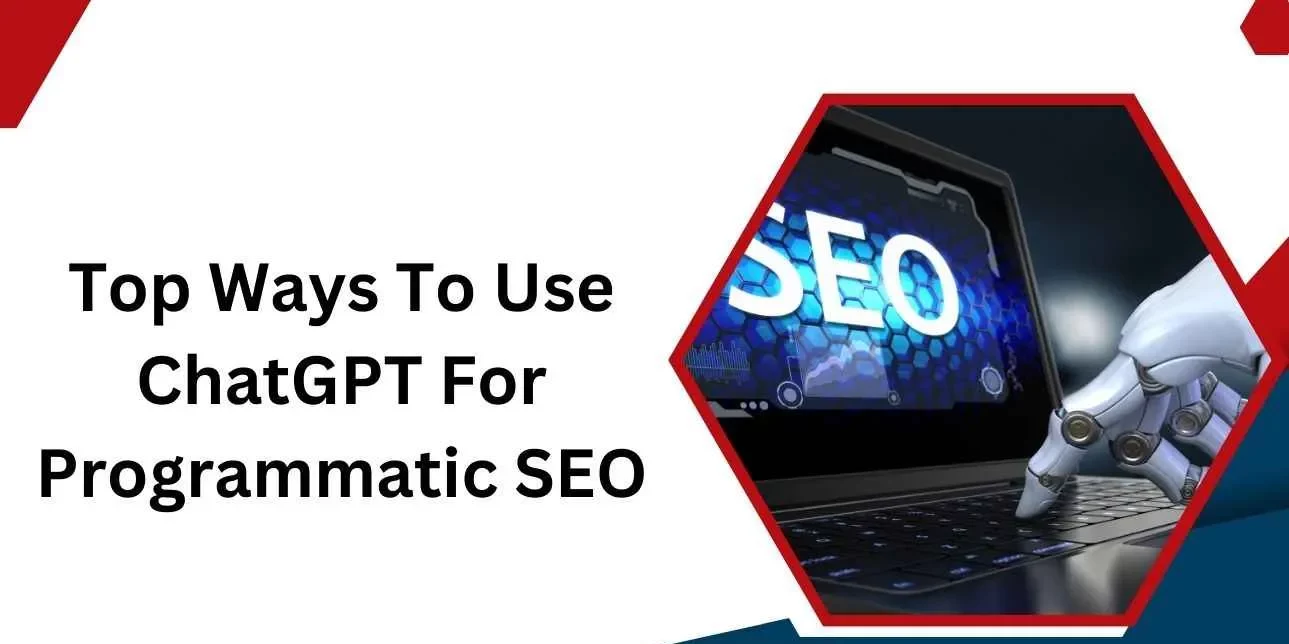
From uncovering valuable keywords to streamlining data collection processes, ChatGPT has proven to be an invaluable ally in optimizing websites for search engines.
Join me as we explore the limitless possibilities and unleash the true potential of ChatGPT in driving organic traffic, boosting rankings, and achieving SEO success like never before.
Let’s step into ChatGPT and unlock the secrets to programmatic SEO! 😉
Top 12 Ways ChatGPT Can Be Used For Programmatic SEO
1. Find Keyword Modifiers
I’ve discovered that ChatGPT is a valuable tool when it comes to finding variations of my main keyword.
For instance, if my main keyword is “resume templates for {job positions}” and I need different options for the placeholder “{job positions}”, I can simply ask ChatGPT to assist me in generating those variations.
What’s great about ChatGPT is its ability to comprehend natural language. It doesn’t matter how I frame my instructions or prompts; as long as I clearly communicate what I’m looking for, ChatGPT can provide relevant suggestions most of the time.
In case the initial results aren’t accurate, I’ve found that adding 1 or 2 examples directly within the prompt itself can help. For example:
“Generate resume templates for {job positions} such as ‘teacher’ and ‘software engineer’.”
By incorporating specific examples, ChatGPT can better understand the context and deliver the desired variations.
It’s a handy feature that allows me to explore different options and expand my keyword variations effortlessly quickly.
2. Create Keyword or Topic Clusters
ChatGPT offers a remarkable feature that allows me to provide a set of keyword ideas, and it will automatically cluster and categorize them into different groups.
The accuracy and precision of this clustering process are truly impressive, leaving me in awe of its capabilities.
For instance, I recently tested the tool by giving it a random list of SEO-related keywords and asking it to create keyword clusters in a tabular format.
The results were astounding, as the tool effectively grouped the keywords based on their relevance and similarity.
If I ever need more than 20 keyword clusters, I can request ChatGPT to provide additional results, whether it’s 10 or 20 more clusters.
It effortlessly generates the desired number of clusters, expanding the insights I gain from my keyword research.
This feature is incredibly useful for organizing and analyzing a large number of keywords, saving me valuable time and effort.
With ChatGPT’s ability to cluster and categorize keywords, I can easily identify patterns, discover new insights, and refine my SEO strategies.
More Examples:
Provide keyword clusters for “healthy recipes” including variations like “low-carb meals” and “vegetarian dishes.”
Cluster the keywords “travel destinations” with variations such as “beach getaways” and “adventure vacations.”
Generate keyword clusters for “technology trends” incorporating variations like “artificial intelligence” and “blockchain technology.”
3. Collect Datasets
One of the incredible features of ChatGPT is its capability to generate small datasets on any given topic.
While it’s important to note that the data may not always be 100% accurate, it still provides a valuable starting point for further validation and verification.
I have personally experienced the power of this feature by simply providing a command to the tool, and it quickly generates a dataset with relevant information.
Although it’s essential to manually validate the data before publishing or implementing it in programmatic SEO projects, ChatGPT’s ability to understand instructions and provide a wealth of information never fails to amaze me.
For instance, I recently requested ChatGPT to create a dataset on “top productivity tools,” and the results were impressive.
The generated dataset contained a variety of tools along with their descriptions, ratings, and even user reviews.
This information served as a helpful resource for my SEO projects, allowing me to explore and analyze different tools in the productivity space.
The dataset generation feature of ChatGPT is a valuable asset for gathering initial data and insights, accelerating the research process, and expanding the scope of programmatic SEO strategies.
More Examples:
Request ChatGPT to create a dataset on “best budget-friendly smartphones” with details on specifications, prices, and user ratings.
Generate a dataset about “popular travel destinations,” including information on attractions, accommodations, and local tips.
Ask ChatGPT to create a dataset on “healthy recipes” with ingredients, preparation steps, and user feedback for each recipe.
4. Create Short Descriptions
When it comes to programmatic SEO, having well-written descriptions or introductions for different sections is crucial.
With ChatGPT, you can rely on its ability to generate concise and informative descriptions directly within your dataset.
For instance, I recently asked ChatGPT to provide a 100-word introduction on the topic of climate change and its impact on biodiversity.
The generated result, which can be seen in the screenshot above, captured the essence of the subject and offered valuable insights.
In some cases, if the initial result doesn’t meet your expectations, you can modify the prompt or provide additional information to guide ChatGPT.
This allows you to refine the generated output and achieve more satisfactory results.
Here are a few examples of how you can leverage ChatGPT’s description-writing capability:
- Request a description of the benefits of organic gardening and how it promotes sustainability.
- Ask ChatGPT to provide an introduction to the history of artificial intelligence and its current applications in various industries.
- Seek a concise overview of the importance of cybersecurity in the digital age and the measures individuals can take to protect their online privacy.
By utilizing ChatGPT’s ability to generate descriptive content, you can enhance the quality and depth of information within your programmatic SEO projects.
5. Brainstorm the Outline
When creating page templates for programmatic SEO, ChatGPT can be a valuable tool for identifying relevant topics and sub-topics to include.
By providing the correct prompts, you can generate a comprehensive page template that aligns with your keywords and content goals.
For example, let’s say your main keyword is “healthy recipes.” You can ask ChatGPT to suggest topics and sub-topics related to healthy recipes, such as meal planning, ingredient substitutions, cooking techniques, and nutritional information.
ChatGPT will generate a list of ideas that you can incorporate into your page template.
It’s important to note that while ChatGPT provides suggestions, you should select the topics and sub-topics that best align with your specific keywords and target audience.
This way, you can create a page template that effectively addresses the information your users are seeking.
Here are a few more examples of prompts you can use:
- “What are the essential elements to include in a travel guide template for {destination}?”
- “Provide sub-topics for a beginner’s guide to {fitness activity} for my programmatic fitness website.”
- “What are some key sections to include in a product review template for {product category}?”
By leveraging ChatGPT’s suggestions for topics and sub-topics, you can create well-structured page templates that cater to your programmatic SEO projects and deliver valuable content to your audience.
Remember to refine the suggestions based on your specific needs and target keywords.
6. Generate FAQs
To enhance the power of your programmatic pages, incorporating frequently asked questions (FAQs) is a great strategy. With ChatGPT’s assistance, generating relevant FAQs for your chosen topic becomes a breeze.
Simply ask ChatGPT to provide FAQs about the topic, and it will deliver a list of commonly asked questions.
This can save you time and effort in brainstorming and researching potential questions.
For programmatic SEO (pSEO), you can take it a step further by replacing certain parts of the questions with variables.
These variables can be dynamically replaced with real data when your automation program runs, resulting in personalized and targeted FAQs.
For example:
- “What are the best {product category} for {specific audience}?”
- “How can I {achieve a specific goal} using {product or service}?”
- “What are the most common {industry-specific} misconceptions?”
By using variables like {product category}, {specific audience}, {specific goal}, or {industry-specific}, you can create dynamic and customized FAQs that align with your programmatic pages.
My Pro Tip: Remember to review and refine the generated FAQs to ensure accuracy and relevancy.
This way, your programmatically generated pages will provide valuable information and address common queries that users may have, ultimately enhancing the user experience and boosting your SEO efforts.
7. Write Google Sheets Formula
ChatGPT’s capabilities extend beyond just generating text. It can also assist with creating complex formulas in Google Sheets and Microsoft Excel. This feature has proven to be quite useful in my programmatic SEO tasks.
The formula shared in the tweet above serves a specific purpose: converting any text in a specified cell into a slug format. A slug is a URL-friendly version of a text string, often used in content management systems like WordPress.
By leveraging this formula, you can automate the process of generating SEO-friendly slugs for your content, making it easier to optimize your programmatic SEO efforts in platforms like WordPress.
8. Write Python and JavaScript code snippets
When it comes to programmatic SEO, having high-quality datasets is crucial. ChatGPT can be a valuable tool for collecting such data through web scraping.
You can use ChatGPT to write scraper scripts in your preferred language and format.
However, it’s important to note that while ChatGPT can assist with web scraping, it may also provide warnings regarding the legality and terms and conditions associated with scraping certain websites.
It’s essential to be aware of and comply with the relevant legal and ethical guidelines when performing web scraping activities.
By utilizing ChatGPT’s assistance, you can streamline the process of writing scraper scripts and gather the necessary data to enhance your programmatic SEO efforts.
Just remember to exercise caution and ensure that your scraping activities align with the appropriate guidelines and permissions.
9. Create Meta Titles and Descriptions
When it comes to creating custom meta titles and descriptions for your generated pages, ChatGPT can lend a helping hand.
By providing specific prompts, you can ask ChatGPT to generate tailored meta titles and descriptions for each page.
To ensure the generated content fits within your desired length, you can add instructions such as “under 60 characters” or “under 40 words” at the end of the prompt.
This helps to restrict the results to meet your preferred length requirements.
For example, if you need a meta title for a blog post about healthy recipes, you can prompt ChatGPT with: “Generate a catchy meta title for a blog post about healthy recipes under 60 characters.”
ChatGPT will then provide you with a selection of meta titles that fit your specified criteria.
10. Create Schema Markup for Your Content
If you’re looking to enhance your blog posts with structured data, such as FAQs, ChatGPT can assist you in creating various schema markup formats for your programmatic SEO project.
Whether you need FAQ schema or how-to schema, ChatGPT can generate the necessary markup code for your website.
It can create a wide range of schema markups, allowing you to add structured data to your content.
For instance, if you want to include an FAQ section about gardening tips in your blog post, you can ask ChatGPT to generate the appropriate FAQ schema markup code.
It will provide you with the necessary code snippets that you can integrate into your website to display the FAQs in a structured format.
By utilizing ChatGPT’s capabilities, you can easily incorporate schema markups into your content, making it more search engine-friendly and improving the visibility and appearance of your pSEO project.
11. Improve Existing Content
If you have a large number of programmatically generated pages and you’re looking to enhance their quality, ChatGPT can offer valuable assistance.
By selecting one of the generated pages and providing its content as a prompt, you can ask ChatGPT for suggestions on how to improve the content.
ChatGPT will provide you with suggestions on enhancing the existing content and also offer a list of semantically relevant topics that may be missing from your page.
While not all suggestions may be applicable, they can provide you with an interesting perspective that you might not have considered before.
This feature allows you to leverage ChatGPT’s expertise to refine and enhance your programmatically created pages, ensuring they are informative, engaging, and comprehensive.
By incorporating the suggested improvements, you can further optimize the quality of your content and deliver a more valuable experience to your audience.
12. Zapier Or Make.com Automation Ideas
If you’re looking for ideas for no-code automation, ChatGPT can be a valuable resource. By asking the tool for suggestions, you can explore various automation possibilities without the need for coding.
For instance, I requested ChatGPT to provide me with automation ideas using Google Sheets and WordPress as the platforms. The tool generated several suggestions, as shown in the screenshot above.
One of the suggestions involved using Zapier to automate programmatic SEO tasks on a website.
This capability allows you to harness the power of automation and streamline your workflows by integrating different tools and platforms.
With the right automation setup, you can enhance efficiency, save time, and optimize various aspects of your website, including programmatic SEO.
Whether it’s data management, content publishing, or other repetitive tasks, ChatGPT can provide you with creative ideas for automating your processes without the need for coding expertise.
10. Conducting Competitor Content Analysis
ChatGPT can help analyze summaries of competitor content and identify areas where your programmatic SEO strategy may be lacking.
By understanding what works for competitors, ChatGPT can suggest additional keywords, content angles, or features to include in your pages.
This process enables you to fill content gaps and create pages that are not only unique but also highly competitive in search rankings.
11. Creating Outreach Emails for Link Building
Link building is vital for SEO, and ChatGPT can streamline your outreach efforts by crafting personalized and engaging email templates.
Whether reaching out for guest blogging opportunities or backlink requests, ChatGPT can create tailored emails based on recipient details and your link-building objectives.
This saves time and ensures your messages resonate with potential link partners, increasing your chances of earning quality backlinks.
12. Simplifying Internal Linking Strategies
Internal linking boosts SEO by distributing link equity and guiding users to important pages.
ChatGPT can analyze your site structure and suggest relevant internal linking opportunities based on page content, keywords, or themes.
By automating this process, you ensure a well-linked website that enhances navigation, improves user experience, and signals search engines about the hierarchy and importance of your content.
You may also read:
- Best ChatGPT Prompts For Affiliate Marketers : Must Try!!
- Icons ChatGPT Coding Course Review
- Why ChatGPT Is Good? ChatGPT: Why Everyone Is Obsessed This Mind-Blowing AI Chatbot?
- What Does ChatGPT Do? ChatGPT For Content And SEO?
- ChatGPT Chatbot: How To Use, Features, Plugins & More!
Final Words: Ways To Use ChatGPT For Programmatic SEO 2025
In conclusion, while it’s true that there have been instances where ChatGPT has produced plagiarized or inaccurate content, it’s important to exercise caution and not blindly rely on its outputs.
However, despite these controversies and limitations, the capabilities of ChatGPT in the field of programmatic SEO are truly remarkable.
I have personally utilized ChatGPT for writing Google Sheets formulas and have witnessed its potential to generate efficient and effective formulas.
It has proven to be a valuable tool in streamlining processes and enhancing programmatic SEO efforts.
If you’re interested in delving deeper into the world of programmatic SEO, I highly recommend checking out my comprehensive guide.
It provides extensive insights and information to help you leverage the power of automation in optimizing your website for search engines.
Should you have any further questions or queries related to programmatic SEO or ChatGPT, please don’t hesitate to reach out. I’m here to assist and provide guidance.










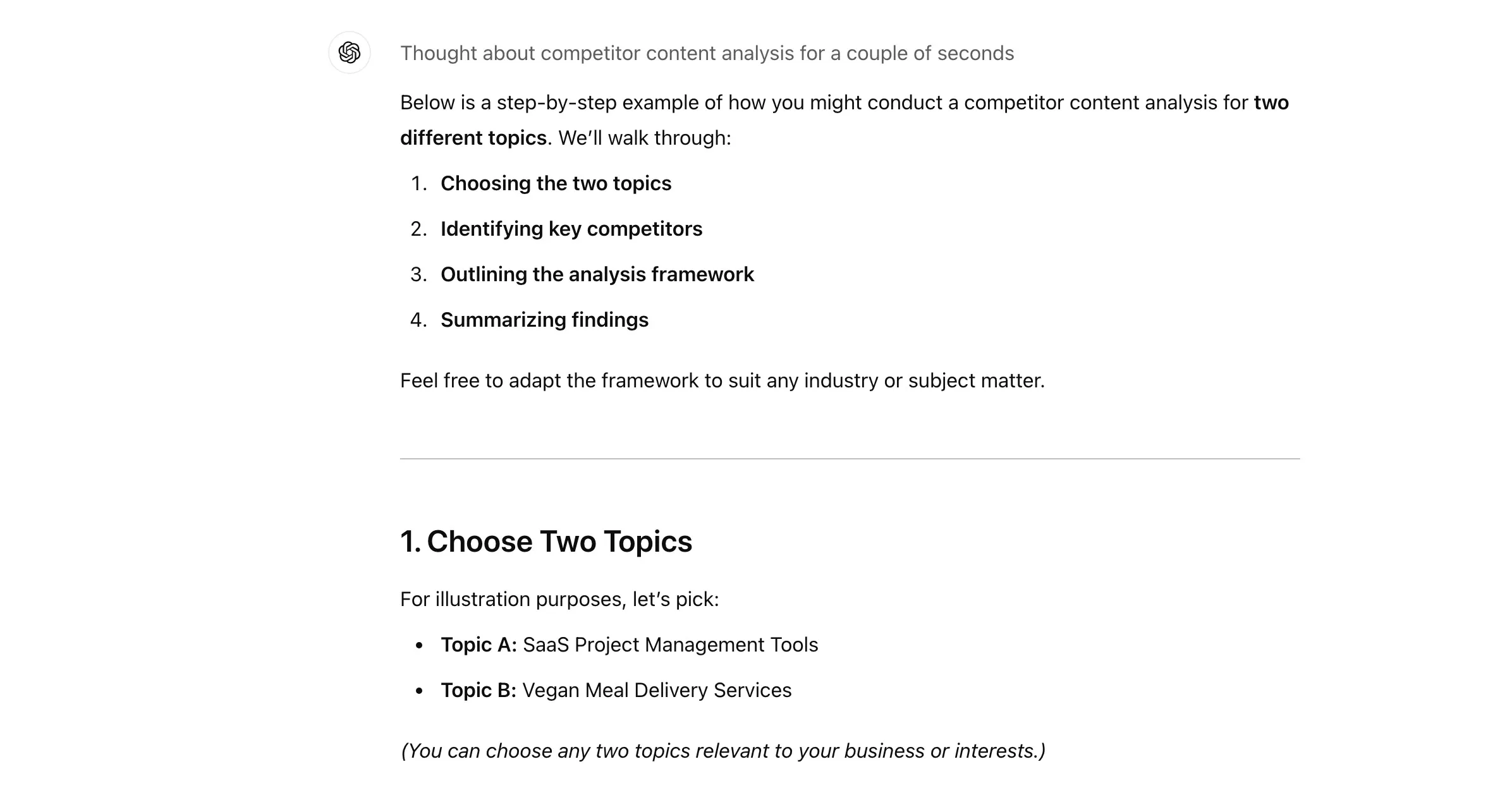
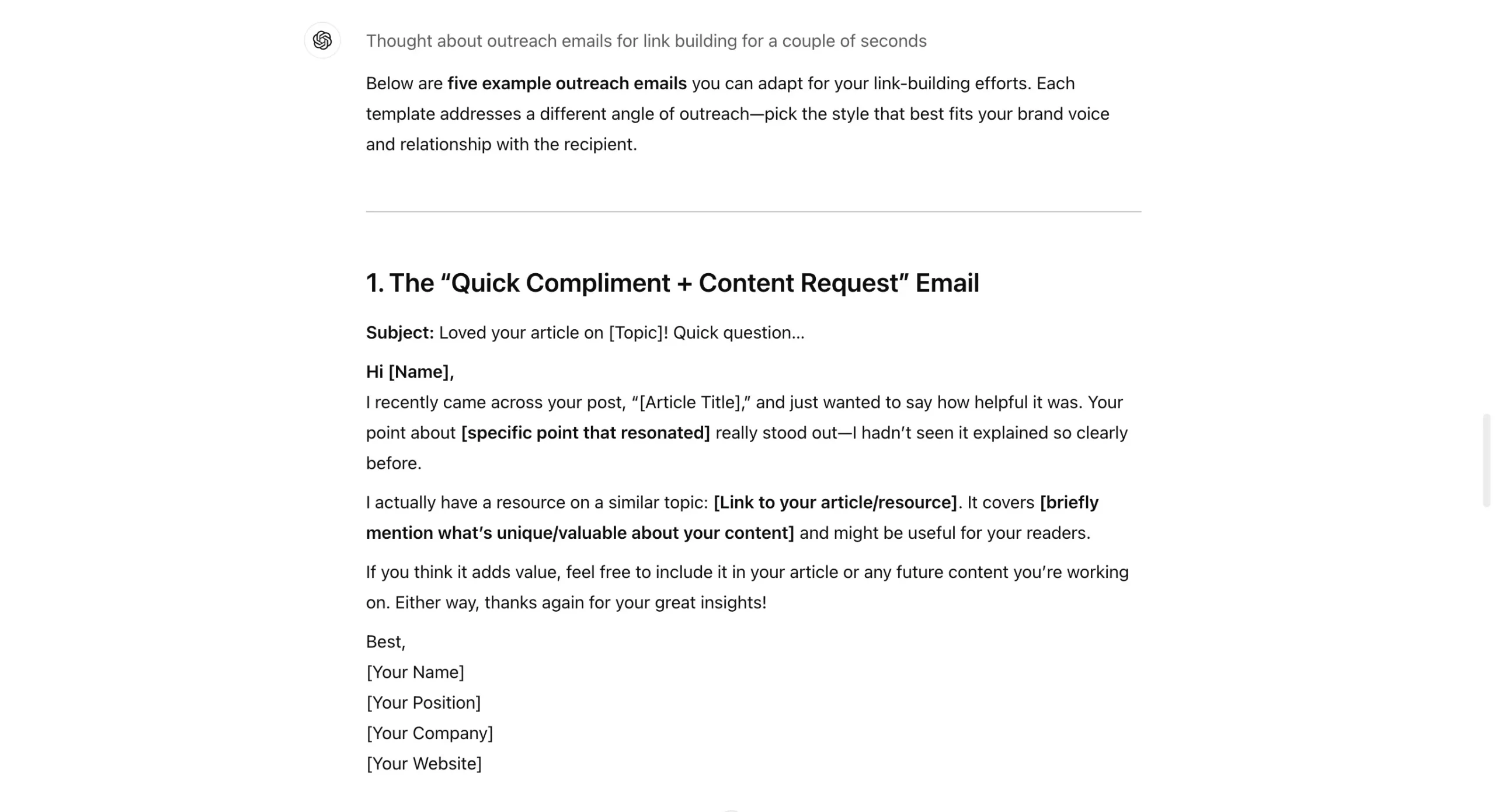
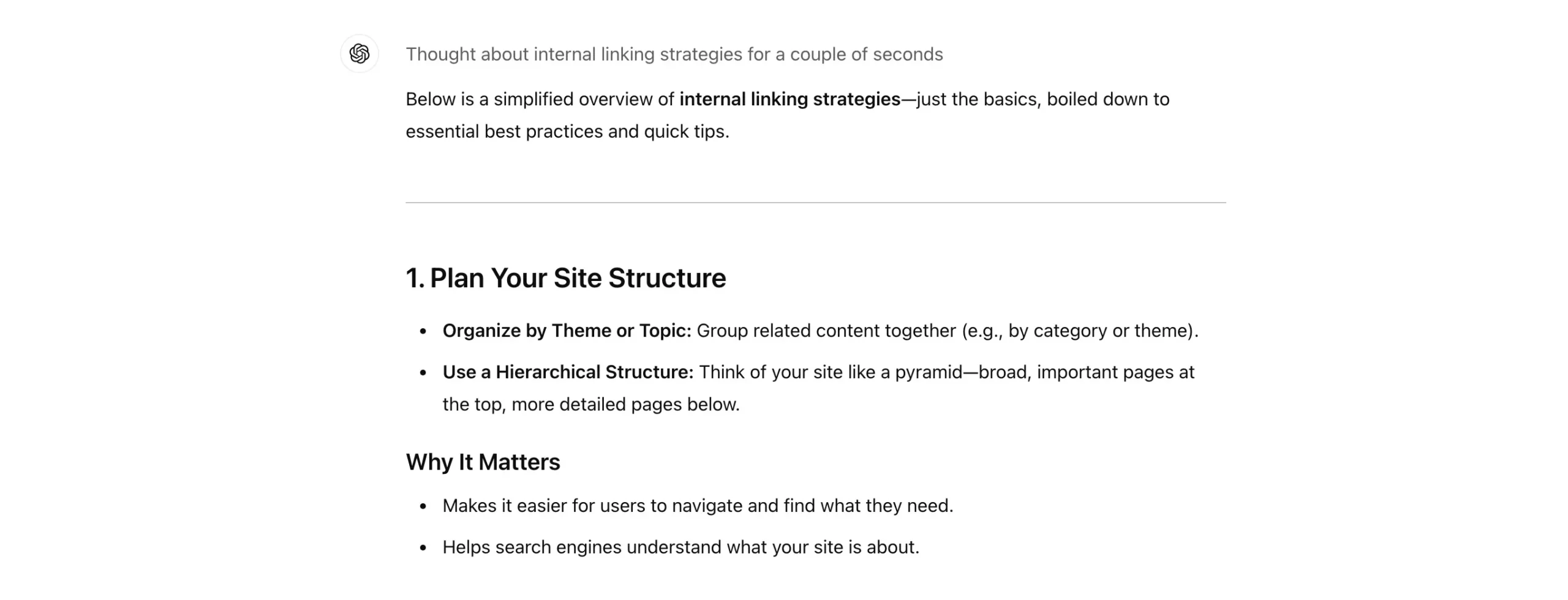

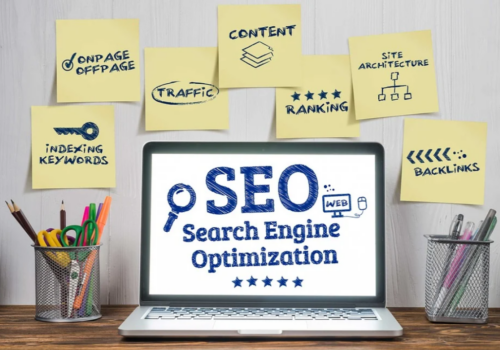

Thank you for sharing this comprehensive guide on leveraging ChatGPT for programmatic SEO. It’s impressive to see the diverse ways in which ChatGPT can be used to enhance various aspects of SEO strategies.
I particularly appreciate the detailed examples and step-by-step instructions you provided for each use case. It makes it easier for readers to understand how to implement these strategies in their own projects.
The idea of using ChatGPT to find keyword modifiers and create keyword clusters is ingenious. It seems like a time-saving and efficient way to expand keyword variations and organize them effectively.
The dataset generation feature also caught my attention. While it’s important to validate the data, having ChatGPT assist in generating initial datasets can undoubtedly accelerate the research process.
The automation ideas with Zapier and Make.com are a great addition, showcasing the broader applications of ChatGPT beyond content generation.
Your cautionary note about potential limitations and the need to validate outputs is crucial. It’s essential for users to be aware of the tool’s capabilities and exercise discretion in applying its suggestions.
Overall, this guide is a valuable resource for anyone looking to integrate ChatGPT into their programmatic SEO workflow. The practical examples and tips you provided make it an engaging and informative read.
Keep up the great work!
I appreciate the balanced approach you took in presenting different perspectives. It’s refreshing to see a nuanced view on this topic. I use AIPRM with chat gpt which makes seo more easier.
nice blog
good
This blog is a goldmine for SEO enthusiasts! From finding keywords to creating content, ChatGPT is your SEO ally. It’s like having a magical SEO assistant. Thanks for sharing these awesome tips! 😊🚀
Your article on using ChatGPT for programmatic SEO is a game-changer for digital marketers. It’s like uncovering a powerful tool that can revolutionize SEO strategies. Your detailed insights into the various applications are invaluable for those seeking to stay ahead in the ever-evolving world of SEO.